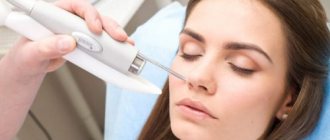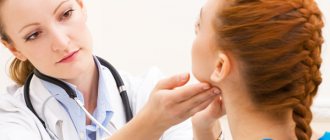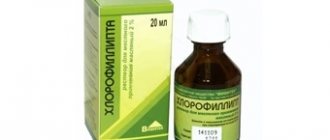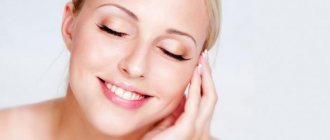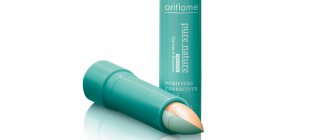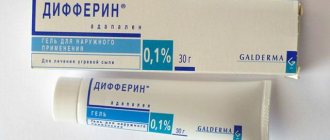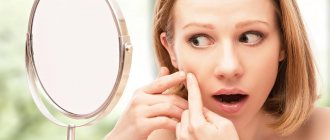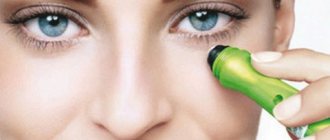Necessary hormone tests for acne
Acne occurs and progresses with the following disorders:
- increased formation of sebum;
- increased detachment of the epithelium of the sebaceous glands;
- proliferation of propionic bacteria;
- development of inflammation in the skin.
Steroid hormones (sex hormones and adrenal cortisol) increase hair growth and sebaceous gland activity . Testosterone plays the main role. In women, there is also dysfunction of skin metabolism caused by increased levels of progesterone or excessive sensitivity to the action of androgens. Prolactin, produced by the pituitary gland, even with a slight increase in concentration in the blood, changes the tissue response to insulin and sex hormones.
Due to changes in fat metabolism, acne may accompany hypothyroidism (low thyroid function). In type 2 diabetes, due to cell resistance to insulin, more insulin is produced than required.
Hyperinsulinemia (excess in the blood) reduces the formation of globulin in the liver, which binds sex hormones. As a result, a lot of free testosterone circulates in the bloodstream; it is actively converted into dihydrotestosterone, which has twice the ability to influence the formation of acne.
The most common external sign of excess male sex hormones in girls and women is increased hair growth on the chin, upper lip and side surfaces of the cheeks (mustache, beard and sideburns). Dense hairs are found on the abdomen, in the perineum, on the inner surface of the thighs, and legs.
The second most common symptom is obesity . It is caused by a violation of fat and carbohydrate metabolism, insulin resistance (insulin resistance). Often women turn to a gynecologist with complaints about an irregular menstrual cycle, rare and scanty periods, infertility, and miscarriage . These are symptoms of hormone imbalance.
A prolonged increase in androgens in women not only leads to a cosmetic defect, but also increases the risks of:
- growth of the inner layer of the uterus (endometrial hyperplasia) with severe uterine bleeding;
- cervical cancer;
- progression of type 2 diabetes mellitus;
- coronary heart disease;
- arterial hypertension;
- metabolic syndrome.
Excessive amounts of testosterone usually lead to the early appearance of secondary sexual characteristics in children - hair growth on the face, under the arms, in the perineum, a rough voice, and an increase in the size of the external genitalia.
In adult patients, high levels of male sex hormones are accompanied by:
- increased aggressiveness;
- sudden changes in emotional background;
- attacks of pain in the heart;
- involuntary cessation of breathing during sleep (apnea);
- baldness;
- prostate adenoma;
- infertility.
Depending on the symptoms, a dermatologist or gynecologist (andrologist) prescribes tests for:
- pituitary thyrotropin and thyroxine - reflect the work of the pituitary gland and thyroid gland;
- cortisol and adrenocorticotropin - show the level of functional activity of the adrenal glands;
- free, total testosterone, dehydroepiandrosterone, sex steroid binding protein - are necessary to assess the functioning of the gonads; in women, oxyprogesterone, anti-Mullerian hormone and estradiol are additionally examined;
- pituitary prolactin – the formation of sex hormones depends on its concentration;
- follicle-stimulating and luteinizing - stimulate the maturation of the follicle, the synthesis of progesterone, testosterone.
In women, tests are prescribed on days 4-6 of the menstrual cycle . Sometimes the doctor may recommend re-diagnosis 2-3 days before menstruation. Rules for taking hormones:
- come to the laboratory in the morning before breakfast;
- per day, exclude alcohol consumption, overeating, sports, visiting the sauna, beach, solarium, intense emotional stress;
- Discuss with your doctor a week in advance the possibility of using medications and discontinuing hormonal medications, including for contraception;
- Immediately before the analysis, it is forbidden to smoke (3 hours before), undergo X-ray diagnostics, or take physiotherapeutic procedures.
If a hormonal imbalance is detected, its cause must be determined . Based on the results of the initial diagnosis, further laboratory tests, ultrasound of the pelvic organs, MRI of the brain, and tomography of the adrenal glands may be prescribed. It is necessary to exclude diabetes mellitus (glucose in the blood and urine, glycated hemoglobin).
The most common cause of hyperandrogenism in women is polycystic ovarian changes. In this case, the use of contraceptive drugs that inhibit testosterone synthesis is indicated - Yarina, Diana 35, Jess.
In men, the background process for acne may be pathology of the adrenal glands, taking hormonal drugs to build muscle mass, or changes in the function of the gonads. If the diagnosis does not reveal any deviations from the norm, then it is recommended to culture the microflora (smears of the skin in the area of the rash), tests for intestinal dysbiosis, subcutaneous mites (demodex).
Read more in our article about hormone tests for acne.
Approximate cost of tests
Approximate prices for the tests necessary to diagnose acne are presented in the table below. The cost at the clinic closest to you may differ from those presented below.
Cost, in rubles
Microscopy of skin scraping to detect demodex
Next: Pimples from Eggs
If 1 or 2 pimples appear on your face or back, then this is not a cause for concern.
But there are people for whom skin rashes become a real problem.
We are talking about acne, when pimples spread throughout the body, but are more localized on the cheeks, forehead, chin and back.
- All information on the site is for informational purposes only and is NOT a guide to action!
- can give you an ACCURATE DIAGNOSIS !
- We kindly ask you NOT to self-medicate, but to make an appointment with a specialist !
- Health to you and your loved ones!
In this case, multiple acne is not just a cosmetic defect, but most likely a manifestation of a pathological process occurring in the body.
Which doctor should such patients see and what tests should they take?
How hormones affect the development of acne
Acne occurs and progresses with the following disorders:
- increased formation of sebum;
- increased detachment of the epithelium of the sebaceous glands;
- proliferation of propionic bacteria;
- development of inflammation in the skin.
Steroid hormones
These are reproductive and adrenal cortisol, which increase hair growth and the activity of the sebaceous glands. The leading role in these processes is played by the male sex hormone – testosterone.
Progesterone and androgens
In women, along with an excess of steroids, there is also dysfunction of skin metabolism caused by increased levels of progesterone or excessive sensitivity of receptors to the action of androgens. Prolactin, produced by the pituitary gland, even with a slight increase in concentration in the blood, changes the tissue response to insulin and sex hormones.
Insulin and sex hormones
Due to changes in fat metabolism, acne may accompany hypothyroidism (low thyroid function). In type 2 diabetes, due to cell resistance to insulin, more insulin is produced than required. Hyperinsulinemia (excess in the blood) reduces the formation of globulin in the liver, which binds sex hormones.
As a result, a lot of free testosterone circulates in the bloodstream; it is actively converted into dihydrotestosterone, which has twice the ability to influence the formation of acne.
And here is more information about hormonal imbalance in men.
Types of acne
There are three types of acne:
- ordinary ones more often affect the skin in adolescence;
- medicinal ones appear as a result of the body’s reaction to taking a drug;
- professional ones occur in people whose professional activities take place in places with a highly polluted atmosphere: oil, dust, tar, etc.
Acne vulgaris occurs as a result of clogged skin pores.
In the vast majority of cases, they affect the skin of young girls and boys during puberty, when their hormonal levels change significantly.
Following this, the skin may change and the activity of the sebaceous glands may increase.
An equally significant cause of teenage acne is an increase in the level of steroid hormones, which provoke an increase in the number of sebaceous glands.
- As a result of the increased activity of androgens, the density and viscosity of the secreted secretion increases, which clogs the pores.
- The problem is aggravated by bacteria that live in the hair follicles. When they begin to actively multiply, acne appears.
Photo: acne vulgaris
Additional symptoms of problems in the body in women
You can suspect a hormonal problem based on excess hair growth and obesity.
Excessive hair growth
The most common external sign of excess male sex hormones in girls and women is increased hair growth on the chin, upper lip and side surfaces of the cheeks (mustache, beard and sideburns). Dense hairs are also found on the abdomen, in the perineum, on the inner thighs, and legs. Their thickness and length are due to the sensitivity of hair follicles to androgens and hereditary predisposition.
Obesity
The second most common symptom is obesity. It is caused by a violation of fat and carbohydrate metabolism, insulin resistance (insulin resistance).
Cycle disorders, infertility
Often women turn to a gynecologist with complaints about an irregular menstrual cycle, rare and scanty periods, infertility, and miscarriage. These symptoms also confirm a hormonal imbalance in the body.
Video questions to the doctor about acne:
Acne is a fairly common problem that many people face with the need to correct it. However, not everyone turns to a specialist for this, and only a doctor can help in diagnosing acne and choosing the optimal therapeutic program for the clinical case. It is important to understand what tests need to be taken for acne, how to correctly interpret the results of the study, and how the course of the prescribed treatment will depend on them.
What, besides acne, indicates problems in men?
Excessive amounts of testosterone usually lead to the early appearance of secondary sexual characteristics in children - hair growth on the face, under the arms, in the perineum, a rough voice, and an increase in the size of the external genitalia.
In adult patients, high levels of male sex hormones are accompanied by:
- increased aggressiveness;
- sudden changes in emotional background;
- attacks of pain in the heart;
- involuntary cessation of breathing during sleep (apnea);
- baldness;
- prostate adenoma;
- infertility.
Stages of alopecia in men
History taking
Taking an anamnesis is of very great diagnostic importance. The dermatologist should definitely ask you: when did acne first appear, how long have they bothered you, are there periods of “quiet”, and what do you attribute this to, how did you treat acne before and with what result, did your immediate family suffer from acne, whether do you have allergies, somatic chronic diseases and skin diseases, what medications do you take, what care and decorative products do you use, do you use oral contraceptives.
For women, it is imperative to find out a gynecological history (menstrual irregularities, pregnancy, gynecological diseases, etc.). Marital status and place of work, climate change may also matter.
The doctor should also determine your psycho-emotional state, your attitude towards acne and your level of stress tolerance.
What tests to take for hormones for acne
Depending on the symptoms, a dermatologist or gynecologist (andrologist) may prescribe an individual set of hormonal tests. Most often, at the first stage, the doctor prescribes standard hormones.
- pituitary thyrotropin and thyroxine - reflect the work of the pituitary gland and thyroid gland;
- cortisol and adrenocorticotropin - show the level of functional activity of the adrenal glands;
- free, total testosterone, dehydroepiandrosterone, sex steroid binding protein - are necessary to assess the functioning of the gonads; in women, oxyprogesterone, anti-Mullerian and estradiol are additionally examined;
- pituitary prolactin – the formation of sex hormones depends on its concentration;
- follicle-stimulating and luteinizing - stimulate the maturation of the follicle, the synthesis of progesterone, testosterone.
Watch the video about tests for acne:
Treatment for hormonal acne
Problems with acne caused by hormonal imbalance require consultation with several doctors: a dermatologist, an endocrinologist, and for women, a gynecologist. A comprehensive examination will help you find the most effective way to get rid of rashes. Therapeutic measures are carried out in several stages:
- Checking hormonal status.
- Taking prescribed hormonal and other medications (exfoliants, retinoids, benzoyl peroxide, azelaic acid, antibiotics, probiotics, vitamins).
- Treatment of acne from the outside using special cosmetics.
- Treatment of rashes with folk remedies.
- Professional facial cleansing (it is better to do this in a beauty salon to eliminate acne without traces).
- Organization of proper nutrition.
- Use of traditional medicine.
Treating acne with hormones is the most effective method. Doctors prescribe drugs with different effects:
- to decrease testosterone levels;
- contraceptives;
- increased concentration of estrogen;
- antiandrogens;
- elimination of insulin resistance.
Metformin reduces insulin resistance. After regular use of contraceptives with ethinyl estradiol and progesterone, androgen levels decrease. Antiandrogens reduce the secretion of testosterone and the formation of dihydrotestosterone.
Oral contraceptives are contraindicated for women with hypertension or high blood viscosity. Contraindications include malignant tumors in the mammary glands and smoking.
Rules for preparing for delivery and deadlines
In women, tests are prescribed on days 4-6 of the menstrual cycle. Sometimes the doctor may recommend re-diagnosis 2-3 days before the expected menstruation. It is important to follow these rules when donating blood:
- come to the laboratory in the morning before breakfast;
- per day, exclude alcohol consumption, overeating, sports, visiting the sauna, beach, solarium, intense emotional stress;
- Discuss with your doctor a week in advance the possibility of using medications and discontinuing hormonal medications, including for contraception;
- Immediately before the analysis, it is forbidden to smoke (3 hours before), undergo X-ray diagnostics, or take physiotherapeutic procedures.
Folk remedies
Some folk recipes are popular and quite effective in the fight against acne.
Photo: mask with white clay
The most popular of them:
- A very popular homemade lotion is made from equal amounts of the following ingredients: apple cider vinegar, vodka and thyme infusion;
- decoction of birch leaves or buds. They need to wipe the face after preliminary cleansing. Birch decoction suppresses microbial activity;
- Chamomile infusion, combined in equal proportions with camphor oil, relieves inflammation well. You need to wipe your skin with this composition every day.
- masks made from cosmetic clay are very helpful in the fight against comedones: green, white, black, blue;
- Mix 1 part honey with 1 part calendula tincture in alcohol. Wipe your face after cleansing;
- Lotions made from the juice of aloe leaves help a lot.
Can sunflower seeds cause acne on the face? Find out here.
How to reduce acne inflammation overnight? Read on.
Test results and further course of treatment
If a hormonal imbalance is detected, its cause must be determined. The formation of sex hormones occurs in the ovaries, testicles, and adrenal glands. This process is controlled by the pituitary gland and hypothalamus.
Among women
Based on the results of the initial diagnosis, further laboratory tests, ultrasound of the pelvic organs, MRI of the brain, and tomography of the adrenal glands may be prescribed. It is necessary to exclude diabetes mellitus (glucose in the blood and urine, glycated hemoglobin).
The most common cause of hyperandrogenism in women is polycystic ovarian changes. In this case, the use of contraceptive drugs that inhibit testosterone synthesis is indicated - Yarina, Diana 35, Jess.
In men
In men, the background process for acne may be pathology of the adrenal glands, taking hormonal drugs to build muscle mass, or changes in the function of the gonads. If the diagnostics did not reveal any deviations from the norm, then it is recommended to culture the microflora (smears of the skin in the area of the rash), tests for intestinal dysbiosis, subcutaneous mites (demodex).
Hormonal drugs
Properly selected hormonal acne pills give positive results after a few months. They are prescribed in courses, the dosage is determined by the doctor. This therapy helps cure acne due to hormonal imbalance.
In addition to oral medications, prescriptions may include hormonal ointment for acne. It improves metabolic processes in the skin and heals well. When prescribed and used correctly (taking into account contraindications), the ointment does not cause allergic reactions or other side effects.
When treating hormonal skin pathologies, she uses a special acne cream based on retinoids, azelaic acid. These substances are included in complex therapy in the treatment of hormonal acne. List of the most popular and effective means:
| Pills | Ointments | Creams |
| Jess | Hyoxysone | Baziron |
| Yarina | Triderm | Skinoderm |
| Dimea | Akriderm | Klenzit |
| Chloe | Akriderm | Different |
| Janine | Prednisolone | Kvotlan |
| Diana-35 | Hydrocortisone | Klindovit |
| Sinaflan | ||
| Elokom |
Before taking any hormonal medications, consultation with a doctor is required.
Diet rules against acne
Regardless of the cause, patients are shown nutrition that can stop the development of acne:
- food is taken 5-6 times a day;
- the basis of the diet is fresh vegetables and fruits, berries;
- Lean meat and boiled fish, seafood are allowed;
- giving up milk and replacing it with fermented milk drinks and cottage cheese;
- a complete ban on sugar, white flour and alcohol, spices, spicy and fried foods;
- replacing animal fats with vegetable oil (2 tablespoons per day), nuts (no more than 50 g);
- If you are obese, one day a week should be a fasting day: on kefir, apples, cottage cheese or vegetables.
And here is more information about obesity due to hormonal imbalance.
Blood tests for hormone levels are indicated for patients with persistent acne and signs of hormonal imbalance. The function of the gonads, pituitary gland, thyroid gland, and adrenal glands is examined. In women, an increase in free testosterone and prolactin is most often found, and in men, an increase in cortisol and total testosterone.
Based on the examination results, therapy is prescribed or additional diagnostic methods are required. All patients with acne are prescribed dietary nutrition to restore metabolic processes.
source
Video: Details
Steroid
Steroid hormones are those that are present in men and women, but in individual amounts.
Here we can highlight:
- corticosteroids;
- androgenic hormones in men;
- estrogen in women.
Acne appears due to an increased amount of male hormones. In women, a slight excess leads to profuse rashes.
Testosterone
Testosterone - produced in men and in certain situations in women, is responsible for sexual attraction to the opposite sex. Increased content is often inherited.
An increase in levels can be triggered by a woman’s pregnancy, adolescence (this is normal), and disturbances in the functioning of the adrenal glands and pituitary gland.
Read, treatment of facial acne in teenagers at home. About watery pimples turning into sores on the face. More details here.
Estradiol
Estradiol is a female hormone produced in the ovaries. A sufficient amount of the hormone promotes the production of collagen, which is why a woman’s skin remains young and elastic for a long time.
Insufficient production provokes the development of acne. Everything is explained by a decrease in the skin’s protection to external influences.
Cortisol
Cortisol is a stress hormone produced in the adrenal glands during periods of anger and abuse. When used in sufficient quantities, it helps heal wounds, but when taken in excess, it leads to the appearance of acne and other types of pimples.
What tests need to be done to identify the cause of acne?
The problem of acne in modern society reaches enormous proportions. All dermatologists in the world unanimously say that this disease has a tendency to “aging”, i.e. More and more people after 25-30 years of age suffer from acne. Today I want to talk to you about this problem, as a doctor with a patient, because I, having a higher medical education, really understand what I’m talking about.
I really hope that I will be useful to some of you, and if even one person learns something new for themselves, then my work has not been in vain.
Let's start with the fact that acne is a serious disease. This is not 2-3 pimples before the menstrual cycle in girls, do not confuse these concepts.
Acne is an inflammatory skin disease.
It occurs due to changes in the structure of the sebaceous glands themselves and their excretory ducts. If you have more than 10-11 inflamed elements on your face, then it makes sense for you to seek advice from a specialist.
So, to identify the causes of acne, it is necessary to monitor the functioning of all body systems in order to identify exactly where the failure occurred.
1. The first and most important doctor that girls with this problem should visit is a gynecologist.
The boys go to the urologist. It is necessary to do an ultrasound of the pelvic organs and monitor the functioning of the ovaries. Then comes a very significant analysis - we donate blood for sex hormones: FSH, LH, testosterone, prolactin, androstenedione, progesterone. These hormones are released according to the days of the menstrual cycle. The gynecologist will definitely tell you which hormone and when exactly you need to take it. it all depends on the length of your cycle.
2. Next we go to the endocrinologist
, if we don’t want to, then at least we donate blood for thyroid hormones.
3. The next test is a general blood test
, erythrocyte sedimentation rate
(ESR).
Using this analysis, the dermatologist will subsequently identify signs of inflammation in your body.
You should also check your cortisol levels
.
4 . We donate blood for biochemistry
and look at the work of the most important liver enzymes: AST, ALT, GGT, alkaline phosphatase. We also check total protein, total bilirubin and creatinine. I write the names of all enzymes in abbreviated form, because you don’t need to know them, and any doctor will understand everything.
5. Donate blood for vitamins and microelements
, namely vitamin D and zinc.
6. Checking the lipid spectrum
7. Be sure to donate blood for antibodies to Helicobacter pylori
(IgG, IgM)
8. To exclude anemia, we perform a ferritin test.
9. A very important test is food intolerance
(we make the widest palette for 90 products)
10. You also need to go for an ultrasound of the abdominal organs to a gastroenterologist
With all these tests, we go to a dermatologist to identify the cause of the disease. Only after finding the cause can you say goodbye to the acne problem forever. There is no need to self-medicate and use external pharmaceutical products. 90% of patients use them incorrectly, thereby aggravating their situation.
I sincerely wish you health! If this topic is interesting, please like it so that I understand in what direction to write articles in the future.
You can find other equally useful articles below:
source
Questions and answers
The main question of many teenagers, their parents and some other groups of the population is what hormones should be tested for acne?
But at the same time, other points of interest arise, which we will try to highlight further.
Which doctor should I contact?
Many patients with the appearance of a large number of acne on the body go to see a dermatologist.
But to identify their true cause, you will most likely need consultation with other specialists.
- Since acne is often hormonal in nature, patients with such problems must be sent to an endocrinologist.
- Hormonal imbalances can be caused by diseases of the female genital organs, so all women need to additionally visit a gynecologist.
Does baby powder help with facial acne? Find out here.
Patients are often referred for consultation to a gastroenterologist, since acne can appear against the background of diseases of the digestive system.
Sometimes intestinal dysbiosis has this manifestation.
What tests are done for acne?
If acne appears on the body that cannot be treated with antibacterial care products, you must undergo the following tests:
- general and biochemical blood tests, which may indicate malfunctions of some internal organs;
- blood test for CSR;
- cultural cultures - skin scraping to determine pathogenic microflora on the skin;
- analysis of thyroid hormones;
- analysis of sex hormones.
To determine the tactics of antibacterial treatment, an additional test of the body's response to antibiotics is prescribed.
Before taking tests, the patient is warned about the necessary preparation, which consists of fulfilling the following conditions:
- all tests are taken only on an empty stomach in the morning;
- women need to take sex hormones on the 5th, 6th or 7th day of the menstrual cycle;
- During the day you cannot have sexual intercourse, play strenuous sports or perform hard physical work.
Photo: venous blood is collected on an empty stomach
Are they always necessary?
Sometimes a dermatologist can prescribe treatment based on an external examination of the patient.
Testing for acne is mandatory in the following cases:
- if the treatment initially prescribed by a dermatologist does not help for 2 or more weeks;
- if acne appears in a girl or woman with obvious signs of a hormonal disorder: facial hair growth, obesity, etc.;
- if treatment with antibiotics does not work. In this case, gram-negative folliculitis is suspected.
What the results can show
Blood tests evaluate the functioning of internal organs.
- Thus, these results may indicate existing liver or gallbladder diseases, which can cause acne.
- Hormone analysis in women and men reveals endocrine disorders.
- Thus, thyroid hormones indicate the sufficiency of its functioning and in case of deviation from the norm, the patient requires complex treatment.
- Sex hormones in patients with acne on the body are often elevated, especially for male sex hormones.
This data allows you not only to understand the cause of acne, but also to select the appropriate treatment.
What to do if hormonal levels are normal
In this case, the patient should contact a gastroenterologist.
- Perhaps acne was caused by diseases of the gastrointestinal tract. The doctor will select a suitable diet and prescribe useful medications for the stomach and intestines.
- In some cases, a large number of pimples appear due to the active activity of the subcutaneous Demodex mite. A dermatologist can make this diagnosis after taking a skin scraping.
- If acne is the result of inappropriate care for problem skin, then you need to consult a dermatologist on this issue and choose care products for yourself.
Why are tests for facial acne necessary?
There are not many reasons for the appearance of acne on the face; they can act both separately and in combination. These include the following:
- excess secretion production by the sebaceous glands,
- hyperkeratosis – excessively thick top layer of skin,
- imbalance of hormones in the blood,
- presence of pathogenic microorganisms.
Despite the small number of causes, diagnosing acne is extremely important, since it helps to identify the leading etiological factor and its features, in particular, how exactly the hormonal balance in the body is disturbed, what pathogens aggravate the course of acne.
If acne appears on the skin, you should consult a specialist: a dermatologist can help determine an effective solution to the problem. In a number of situations, consultations with a gynecologist, endocrinologist, and andrologist may be required.
At your first appointment, your dermatologist may examine the skin scraping using microscopy. This helps to identify a rather rare cause of acne - subcutaneous demodex mites. In this case, the specialist will immediately prescribe suitable corrective measures to combat the tick and strengthen the immune system.
Hormonal, biochemical and other studies are especially necessary in the following situations:
- acne manifestations are observed after 20 years,
- the number of rashes on the face and body exceeds 40 active lesions (this indicates a late stage of acne),
- women exhibit symptoms of hyperandrogenism,
- instability of the menstrual cycle in women,
- the patient's body mass index exceeds normal values.
All of the above should be a reason to immediately consult a doctor and carry out all the necessary diagnostic procedures.
Photos before and after
Look, a recipe for acne mash made at home. How to get rid of acne on your face at home? Find out further.
How to get rid of acne spots?
The answer is here. It’s not enough to decide to get tested to determine the cause of acne. It is important not to distort the indicators, so you must adhere to the rules indicated above, as well as a dermatologist who will study the examination results and prescribe treatment.
What tests to take for acne on the face: range of mandatory studies
The range of diagnostic procedures, the purpose of which is advisable in the case of acne, includes the following:
- Study of the microbial flora of the skin, determination of the antibiotic sensitivity of pathogens when they are identified.
- Study of hormone levels.
- Determination of the level of some biochemical parameters.
If an imbalance of the skin microflora is detected, then the therapeutic effect will be aimed specifically at its correction. Before prescribing antibiotic therapy, it is necessary to determine the most effective drug for a particular clinical case.
Important! You should not self-medicate and choose an antibiotic yourself. This can harm the body, provoke antibiotic resistance, as well as dysbiosis. The choice of drug should be entrusted to a specialist.
Specific medications are selected after identifying the pathogen and the antibiotics to which it is most sensitive. Most often, the main causative agent of acne is Propionibacterium acnes, against which tetracyclines are effective.
Note! A bacterial infectious process can also be accompanied by a fungal one, so it is necessary to examine the skin discharge for fungal flora. This will allow you to prescribe effective antifungal treatment.
Hormonal study
What hormone tests should a doctor prescribe for acne? Be sure to examine the level of sex hormones, the imbalance of which most often provokes the appearance of acne. Androgens affect the intensity of secretion production from the sebaceous glands, and an excess of these hormones causes acne on the skin.
Something to remember! In girls, the level of hormones is determined by the phase of the menstrual cycle, for this reason it is important to take into account the recommendations of the doctor, who will definitely tell you on which days of the cycle it is permissible to donate blood.
A mandatory hormone test is to determine the level of testosterone and other androgenic hormones. An increase in the amount of these hormones is observed during puberty, as well as with hyperplasia of the adrenal cortex and in the case of tumor pathologies of the ovaries.
In addition to androgens, it is important to donate blood to determine the function of the thyroid gland. Indicators such as the concentration of thyroxine, triiodothyronine and thyroid-stimulating hormone are studied. Deviation of results from acceptable indicators indicates a dysfunction of the thyroid gland, which can provoke the appearance of acne on the skin.
The doctor may also see the need to determine the concentration of follicle-stimulating hormone (FSH). An excessive amount of this substance may indicate hypofunction of the gonads or the progression of oncological pathologies. Also, excess FSH can confirm the lack of functionality of the hypothalamic-pituitary system. Another reason for the increase in the level of this hormone is polycystic ovary syndrome.
Important! Polycystic ovary syndrome often provokes high levels of androgens - hyperandrogenism in women, which becomes an etiological factor in the progression of acne.
The presence of polycystic disease can confirm a high level of prolactin in the blood, so prescribing a test for this hormone is also advisable.
The range of hormonal studies that may also be needed during the diagnosis of acne also includes tests for the level of progesterone, luteinizing hormone, and cortisol.
Hormones within acceptable limits: what are further diagnostic measures?
If, after receiving all the results of the hormonal analysis, the specialist is convinced that there are no pronounced deviations, then the diagnostic search is conducted in the direction of identifying other etiological factors. Overproduction of sebaceous secretions, hyperkeratosis - these are the nonspecific causes of acne that also need correction.
Note! Of course, chronic inflammatory pathologies within the body and intestinal dysbiosis can act as indirect causes of acne. However, they can only contribute to the progression of the pathology, and not be its root cause.
In order to correct the factors that aggravate the course of the disease, it is necessary to identify their nature. For this purpose, a biochemical blood test is prescribed.
So, what should be tested for when acne on the face and body bothers the patient? The range of biochemical parameters that may need to be examined includes the following:
- glucose,
- lipid profile,
- enzymes: alanine aminotransferase, alkaline phosphatase,
- creatinine,
- urea.
Based on the test results, the dermatologist can refer the patient to consultations with specialized specialists.
Reasons for appearance
Rashes are a signal of serious problems. Their appearance on the body can be caused by:
- hormonal and endocrine disorders;
- diseases of the digestive system, liver, gall bladder;
- pathogenic microflora;
- impaired lipid metabolism;
- demodicosis
Also, with acne, you should pay attention to the state of the digestive or endocrine system. Hormonal imbalance occurs during adolescence and due to a malfunction of the genital organs and systems. Between the ages of 15 and 21, both sexes experience a hormonal surge. Androgen levels suddenly rise and negatively affect the skin.
In addition, heredity plays an important role. If parents had skin problems during puberty, acne, pimples, then there is a high probability that the picture will repeat in the child.
Also, in women during the menstrual cycle, the level of steroid hormones fluctuates, to which the body can respond with a reaction - a rash. If during this period it goes away on its own, then no intervention is required.
Attention! The onset of pimples due to the menstrual cycle should go away by age 28.
Often, due to a hereditary predisposition, acne spreads to a large part of the face. In this situation, tests and consultation with a dermatologist are required. If a woman (over 30 years of age) continues to be bothered by rashes, this may be a sign of inflammatory processes or polycystic ovary syndrome. The temporary cause is pregnancy or abortion. They are also a consequence of changes in the hormonal background of a woman’s body.
Rashes due to intestinal diseases
In the early stages of liver disease, they practically do not manifest themselves at all. The earliest symptom is specific skin rashes. They are caused by an increase in the amount of bile acid in the blood, which causes general intoxication of the body. The skin takes on a yellowish tint.
With cholestasis (blockage of the bile ducts), the rash is localized on the feet and palms, looking like marks from a burn. With cirrhosis, liver cells die and the whole body becomes covered with spots. Parasitic liver diseases cause rashes resembling hives. They are localized in the lumbar region and abdomen.
Also characteristic is a combination of rash and spider veins, which cause severe itching, which intensifies at night. Taking antihistamines (allergy medications) does not provide relief. Increased bilirubin gives the skin a yellowish tint.
If the contents of the intestines are poorly removed from the body, then some of the toxins will begin to penetrate into the blood. The body begins to get rid of poisons itself through the excretory system. Because of this, the condition of the skin worsens, and it becomes characteristic of:
- increased fat content
- dull complexion
- acne, not only on the face, but also on the back, stomach, chest
- noticeable “black dots” similar to volcanic craters
- skin becomes dry and dehydrated
- After acne heals, scars remain.
After the New Year holidays, many people note a deterioration in their skin condition and notice minor rashes that go away on their own. They are associated with contamination of the body with toxins caused by eating large amounts of heavy food.
The pancreas regulates secretory functions, so disruption of the organ affects the condition of the skin. When pancreatitis worsens, hemorrhoidal (bruise-like) rashes are localized around the navel, and the skin itself acquires a marbled tint. Hives are located throughout the body in stripes, and red “drops” on the skin are also noticeable - vascular aneurysms. The more red protruding dots on the body, the more intense the disease.
What type of rash is typical for allergies?
Allergy skin rashes are not caused by an immune reaction of the blood to allergic elements. This is due to haptens - simple chemical compounds that are not immunogenic. But they tend to bind to the carrier protein. Attaching to a macromolecule, the newly formed complex synthesizes immunoglobulins.
An allergic rash is characterized by the following characteristics:
- It does not always cause itching and fever;
- Accompanied by swelling of the face, eyelids, runny nose;
- The area of the rash corresponds to the places where the skin comes into contact with the allergen (if you are allergic to jewelry - on the wrist or fingers, to deodorant - in the armpits, to cosmetics - on the eyelids or around the mouth);
- A blood test shows an increase in the number of eosinophils;
- The biochemical blood test remains unchanged.
The most common form of allergy rash is hives. In appearance, it resembles pink spots that appear on the skin after contact with nettles. Hives are a reaction to pollen, cosmetics, and dust. Often localized on the bends of the elbows, knees and wrists. Accompanied by severe itching and peeling of the skin.
Depending on the allergen, the rash has the following types:
- Allergy to food. It is an erythematous rash in the form of rough spots rising above the surface of the epidermis. A characteristic feature of food allergies is severe itching.
- Cold allergy. Occurs when exposed areas of skin come into contact with cold (air, water). Although cold does not directly provoke an allergic reaction, it is a trigger for an allergic reaction to improper functioning of the thyroid gland, spleen, etc. Cold allergies are accompanied by lacrimation, nasal discharge, as well as the appearance of whitish and pink, scratch-like spots on the skin, which disappear on their own after some time. If a person has ever had an allergy to cold, he needs to see a doctor to find out the true cause of the malfunction of the body.
- Allergy (atopic dermatitis) to dust/animal hair. It is often diagnosed in children. It manifests itself in the form of an itchy rash, accompanied by increased dryness of the skin. In some cases there are weeping ulcers. The simplest test to identify atopic dermatitis: take an ordinary school ruler and press on the area of the rash for 20 seconds. If a white streak remains on the skin after a few minutes, it is atopic dermatitis. If the skin has regained its previous shade, this is a rash of a different nature.
- Allergy to alcohol. Alcohol has a vasodilating effect. Accordingly, more substances, including toxic ones, are absorbed into the blood. The more components in an alcoholic drink, the stronger the allergy to it. The most “dangerous” drink is absinthe, which contains wormwood, anise, fennel, coriander, and lemon balm. The skin becomes covered with red spots, as if from burns. In chronic alcoholics who drink cheap wine every day, a red, weather-beaten face is a consequence of constant alcohol intoxication of the body. If such a reaction occurs in an ordinary person, he needs to find out the source of the allergy and consult a doctor. The biggest danger is Quincke's edema, when the lungs swell and a person dies within a few minutes.
There are 4 types of allergic rashes: food, contact, respiratory and respiratory. The biggest allergy sufferers are children. It should be remembered that not all products consumed by adults are suitable for children.
A child’s rash should not be ignored. The most dangerous is the rash caused by meningococcal infection. Outwardly, it resembles a food allergy, but at the same time the body temperature rises. It’s better to be on the safe side, and if your baby has any rash, you should consult a doctor.
The distinctive features of an allergic rash are vesicles (capsules with liquid inside), papules (grain-like compactions) and pustules (bubbles with pus). An infectious rash has these symptoms.
Various infections and viruses entering the body damage, first of all, the mucous membrane, as well as the skin. Unlike an allergic rash, an infectious rash is always accompanied by an increase in body temperature.
Also characteristic signs of infection:
- body intoxication, vomiting, headache
- fast fatiguability
- phasing, spread of the rash to other parts of the body with each new day
- enlarged lymph nodes
- rashes look like papules, vesicles and pustules
- the skin dries out and flakes off.
The infection rash is not itchy, but touching it is painful. The causes of rashes are the following diseases:
- Herpes: depending on the type of virus, the skin of the face (lips) or the genitals (head of the penis, labia) are affected. The rash looks like blisters, which gradually open up and ulcers form in their place. Upon completion, a crust will form that should not be touched;
- Scabies: The causative agent is a microscopic mite that leaves tiny tunnels under the skin. Unbearable itching occurs;
- Chickenpox: The rash resembles a mosquito bite, filled with serous fluid. Vesicles spread throughout the body, including the scalp. The soles and palms remain intact;
- Scarlet fever: the rash looks like roseola - pinpoint pink spots of various shapes. After a few days, the rash fades and turns brownish. After the temperature normalizes, the skin peels and flakes. A characteristic feature is redness of the tongue and enlargement of the papillae;
- Measles: the rash looks like papules, which are localized on the inside of the cheeks and gums. The rash spreads from the neck down the back, lastly moving to the limbs. The mucous membrane of the eyes becomes inflamed;
- Rubella: the skin becomes covered with red spots, localized in the thighs and buttocks, and malaise is observed;
- Infectious mononucleosis: lymph nodes enlarge, adenoids swell. The rash is observed throughout the body, including on the roof of the mouth;
- Meningococcal infection: This is an extremely dangerous infection that can lead to the death or disability of a child. It is by the appearance of the rash that one can notice the symptoms of the disease on the first day of infection. A rash with meningococcal infection is a consequence of exposure to toxins caused by the activity of meningococcus, which increase vascular permeability. The rash is hemorrhagic in nature, that is, it looks like small hemorrhages. Mainly localized on the buttocks and limbs.
There is an effective test to distinguish meningococcal rash from other rashes. You need to take a glass, turn it over, press on the area of the rash and twist it a little until the skin around it turns white. If the skin turns pale at the site of the rash, then it is not a meningococcal infection. If the rash remains the same color, you should immediately call an ambulance.

